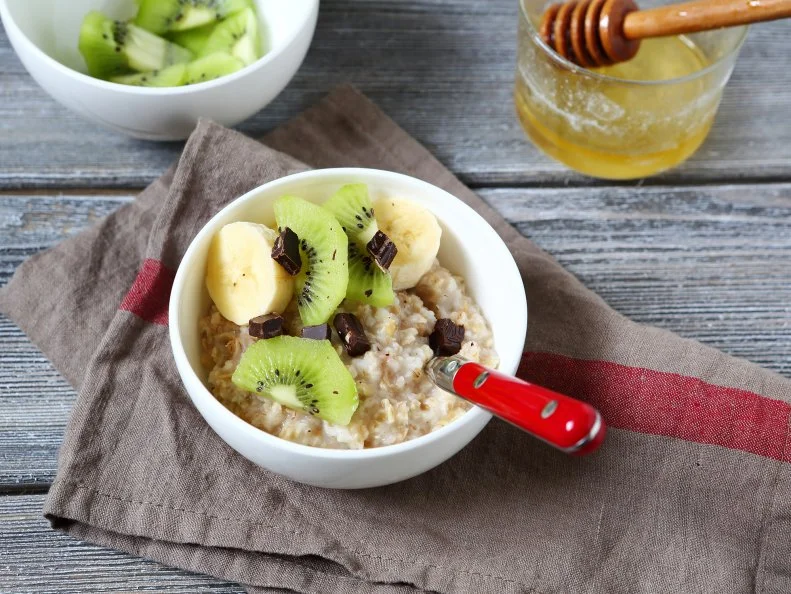9 Breakfast Foods Nutritionists Won’t Eat
- Dana Angelo White, M.S., R.D., A.T.C.
- Jul 28
- 5 min read

Be Mindful of These Breakfasts
Most registered dietitian nutritionists (RDNs) agree that a healthy breakfast is a no-brainer for a dose of early morning energy. Dietitians are also constantly asked what the best (and worst) food choices are for a morning meal. So, we asked RDNs from all over the country about their breakfast orders, and what they won’t eat.

Doughnuts
Jenna Braddock, MSH, RD, CSSD, CPT, a performance dietitian in St. Augustine, FL chooses oats over doughnuts most days. “One food I rarely choose to eat for breakfast is doughnuts because I’ve found that they don’t give me lasting energy for a strong day.” But that doesn’t mean doughnuts are totally off limits. “If I do enjoy a doughnut, I try to pair it with a more balanced meal that contains protein (usually eggs) and fiber from fruit,” adds Braddock. “This helps me have better energy after the meal but still enjoy the flavor of a really good doughnut from time to time. Currently I am making overnight oats for breakfast pretty regularly that’s made with yogurt, chia seeds and frozen blueberries.”

Nothing
“Here’s a food I won’t eat for breakfast: Nothing. I love to start my day with something that is quick, easy and tastes great,” says Chris Mohr, PhD, RD of MohrResults.com. “I’m often a smoothie guy in the morning and a big fan of chocolate, so usually combine some chocolate protein powder, frozen banana, milk and, if I have it, peanut butter powder. What I won’t add is chocolate syrup; the chocolate protein powder does the job in terms of flavor."

Breakfast Pastries
“While I can’t say there is one food or meal I would never eat, I do focus on including certain foods over others for breakfasts,” admits Kristy Del Coro, MS, RDN, LDN, Culinary Nutritionist and co-founder of the Culinary Nutrition Collaborative. “I typically avoid very sweet breakfasts like muffins, doughnuts, Danish and other ‘breakfast pastries.’ Even though I definitely enjoy these off and on, they don’t make me feel my best if I have them everyday.” Instead, Del Coro opts for a more satisfying meal. “I aim for a combination of a complex carb high in fiber plus some protein and a bit of fat to help me feel the most energized in the morning (along with a strong cup of coffee). Examples of some of my favorite go-tos are: whole grain toast with nut or seed butter and a banana, or toast with smashed avocado and an over-easy egg plus pinch of flaky sea salt or everything seasoning.”

Pre-Flavored Oatmeal
New York City-based registered dietitian and chef Abbie Gellman gives plain oatmeal sweet and savory spins. “I love a flavorful, hearty breakfast that keeps me going all morning. A favorite, especially in cooler weather, is oatmeal. However, I prefer to cook plain oats and then add my own toppings versus a pre-packaged flavored oatmeal which may have quite a bit of added sugar. One day my mix-ins could be fresh strawberries, pecans and a bit of maple syrup and another day it may be leftover sauteed veggies and a fried egg. Adding my own twist allows me to control the amount of sugar, make sure I’ve got some protein and other nutrients added on there, and gives a bit of variety.”

Mushroom Omelette
“I wouldn’t eat a mushroom omelette, because I hate mushrooms,” shares Abby Langer, RD, owner of Canada-based Abby Langer Nutrition. “Other than that, there are no foods that I would consider to be off-limits for any meal … For most healthy people, I recommend eating a breakfast that’s rich in protein – 25 to 30 grams, and that also contains around six to 10 grams of fiber. Ricotta toast on Ezekiel bread topped with fruit and a drizzle of honey is a great option! I also love a breakfast bowl with pinto beans, avocado, greens, eggs and hot sauce.”

Bacon by Itself
Recipe developer, author and food photographer Sara Haas, RDN, LDN knows better than to leave her bacon all alone. “Bacon is the best! I will always happily cook and enjoy it for breakfast, but never will I just eat bacon alone, because it’s delicious yes, but not satisfying. That’s why I always add one or two eggs for protein, a slice of whole grain bread for filling fiber (from whole grains) and some kind of fruit for even more fiber plus water and other vitamins and minerals I know my body needs.”

Just Avocado Toast
You will find variations of this popular combo on feeds and restaurant menus but there is a way to make avocado toast a better breakfast according to Samantha Cassetty, MS, RD, New York City-based nutrition and wellness expert. “I love the combo of avocado over toast, but I never eat it on its own because it doesn’t contain enough protein.” Protein is often elusive at morning meals, but Cassetty has several suggestions on how to get more. “Generally speaking, people benefit from at least 20 grams of protein in the morning – more if you’re trying to lose weight or gain strength. If I’m eating avocado toast for breakfast, I’m serving it with eggs on top and a latte on the side to bump up the protein. You can use dairy milk, soy milk or pea-based milk to get a little boost of protein from your coffee.”

Bowl of Cereal
Cassetty also shares her favorite workarounds for enjoying a bowl of cereal. “While whole grain, low-sugar cereal is a convenient option that provides valuable nutrients, it lacks adequate protein, so I’m always hungry soon after eating it.” Size matters when it comes to this breakfast staple. “The serving size for cereal is also pretty small – 1/4 cup to one cup, depending on the variety. That makes it really easy to throw your meal off-balance by serving yourself more,” adds Cassetty. “If you want to make your cereal more filling try add-ins, like fruit and nuts … or skip the bowl and sprinkle your cereal over protein-rich, low-sugar Icelandic skyr, which has around 15 grams of protein per container.”

Store-Bought Muffins
They are a tempting breakfast option but as Food Network contributor, Toby Amidor, MS, RD, CDN points out, many of these grab-and-go baked goods are more than you bargained for. “Those store-bought muffins look delightful – even the bran ones – but they typically have over 600 calories each. Plus, they are high in saturated fat and added sugar and don’t provide better-for-you nutrients like fiber and protein to help keep you feeling full.” Like many other nutrition pros, that doesn’t mean muffins must be off the menu entirely. “Instead, if I’m craving a muffin I choose a healthy muffin recipe and make my own. I control the portion size of my muffin by filling up each muffin divot three-quarters of the way full, giving me a perfectly portioned one. I pair my muffin with Greek yogurt and fruit for a balanced meal,” adds Amidor.








